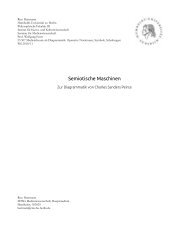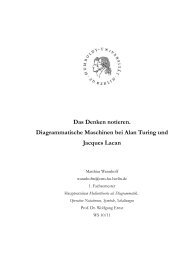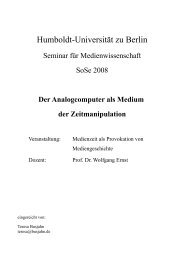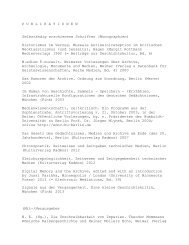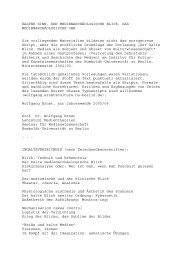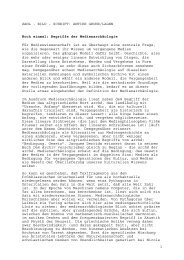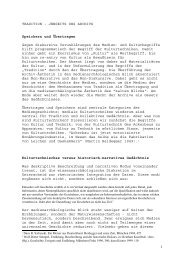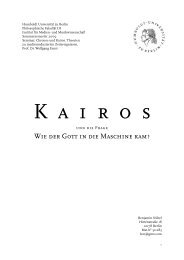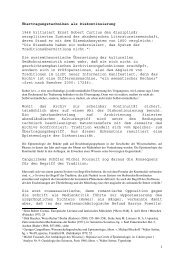Download - Medienwissenschaft
Download - Medienwissenschaft
Download - Medienwissenschaft
You also want an ePaper? Increase the reach of your titles
YUMPU automatically turns print PDFs into web optimized ePapers that Google loves.
sely the obstacles, anachronisms and reflections in the interaction between different media<br />
that fascinate contemporary artists. 93<br />
The genealogy of the media, therefore, should not be described as history but as<br />
changing configurations, with new media simply allotting a different place to the old<br />
(Friedrich Kittler), shifting their value, but not evolutionary.<br />
Is there a Specific Videocy?<br />
If video is merely used as a transmission device for electronically generated images, the<br />
video is not the artistic original. This is precisely the dilemma of video (art) aesthetics,<br />
as the jury of the 10th International Video Festival in Bochum experienced recently, in<br />
A/lay 2000. From the jury's introduction to prize-giving in the competition:<br />
With a number of works, we found a clear tendency towards film. This caused the<br />
problem whether we should judge video [simply] as a medium for recording, production<br />
and projection or [more strictly] the specific aesthetics and media quality of video.<br />
Would the aesthetic delimitation of video against other optical media on the basis<br />
of its formal-technological qualities be justified? 94 Is there a specific videocy 95 ? Is it the<br />
techno-aesthetic pictorial untruthfulness of video compared with the apparent veracity of<br />
television images whose constant broadcast criterion is that they must not be blurred? 96<br />
The initial fascination with the techno-properties of video - the "skandalon of the medium"<br />
(Irmeta Schneider) - increasingly lost its importance compared to the (mostly narrative)<br />
contents; once again proof of the rule that media archaeology ends where contents<br />
- as a diversion from the medium in the sense of Boris Groys (the "submedial") -<br />
begins. Where does that leave videomathesis, the specific knowledge and memory of video<br />
images, the specific options for time-axis-manipulation in video editing, being and<br />
time in time-based technological images?<br />
The Analogue Document of the Original and its Differences to Digital Space<br />
Instead of reproducing originals, originals are now sampled - a molecularisation, even<br />
atomisation of the original. Digitally, there is no original at all: not even an "image". Let<br />
us assume the difference of digital - basically photographic (Flusser's hypothesis) -, ie<br />
discrete quantities of pixels to the physically analogue picture.<br />
Somewhere between scanning a document that can be experienced haptically, for<br />
example an oil painting, und the representation of the readings on a storage medium,<br />
the original materiality of the picture or (simpler:) object seems to get lost. This is also<br />
[already] true for analogue, electronic recording processes. 97<br />
In the medium of video, the coupling of original and archive is a given: in the storage<br />
medium video, although its stored images - in contrast to an oil painting on canvas<br />
- can be detached from its concrete carrier (the magnetic tape). "The photographic can<br />
only be determined from the reflection of the image carrier and the production procedures<br />
that generate it." 98 ; by contrast, the point with digital videocy is (and this is the media-archaeologically<br />
crucial difference between analogue and digital video) that it can be<br />
transferred onto other memories without loss, and therefore extends, with Derrida (Dem<br />
- 165 -



